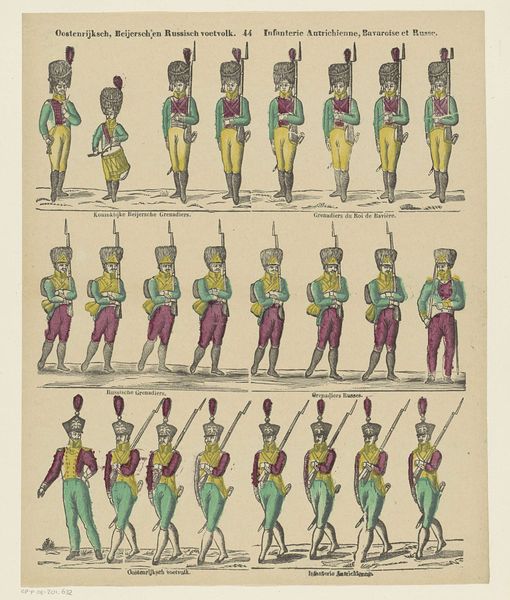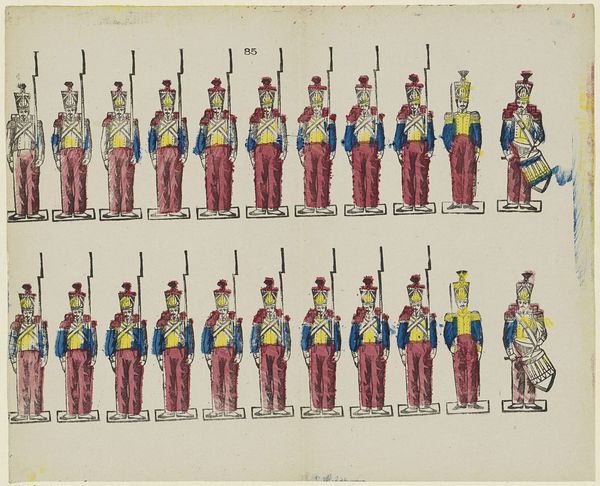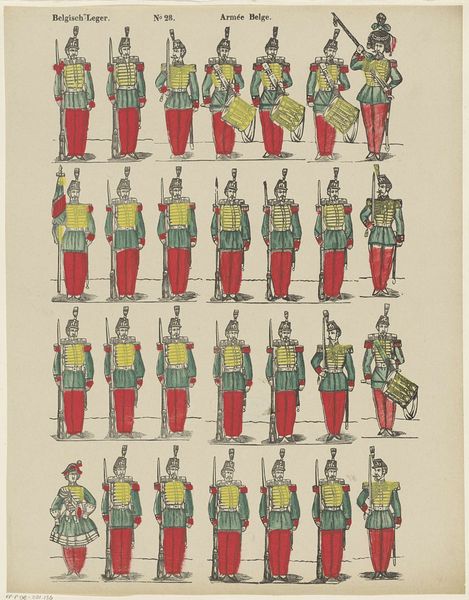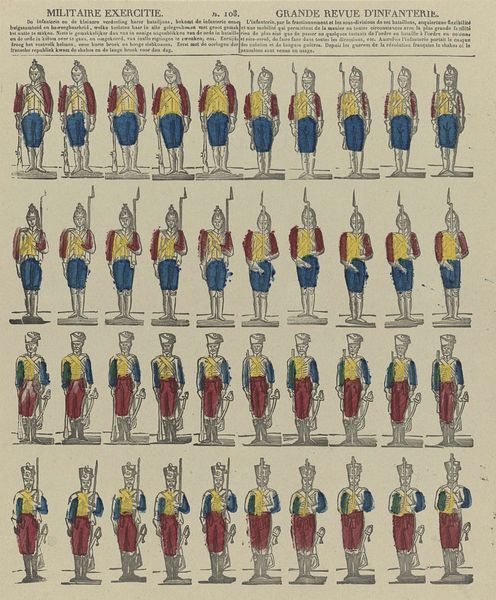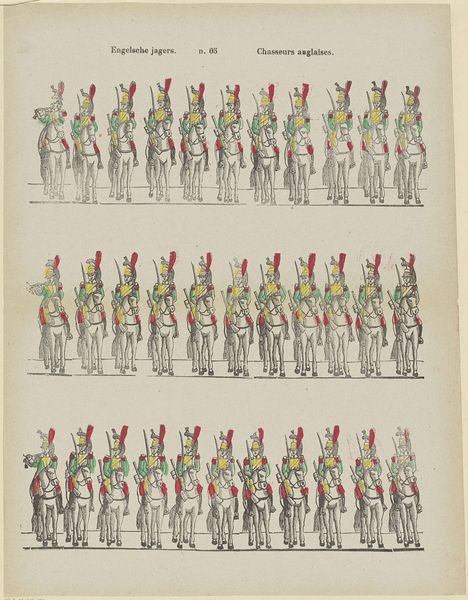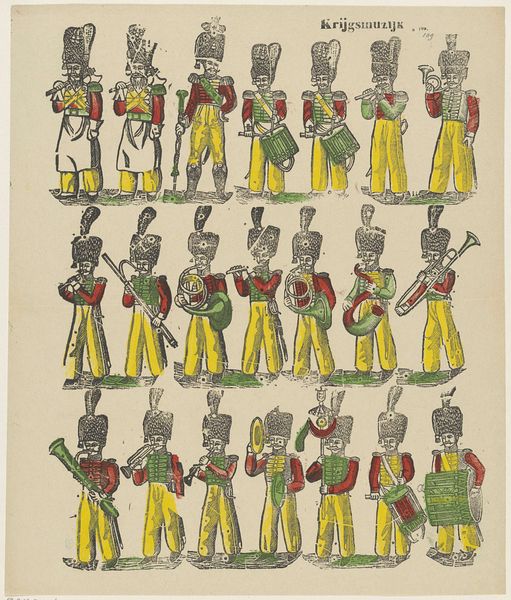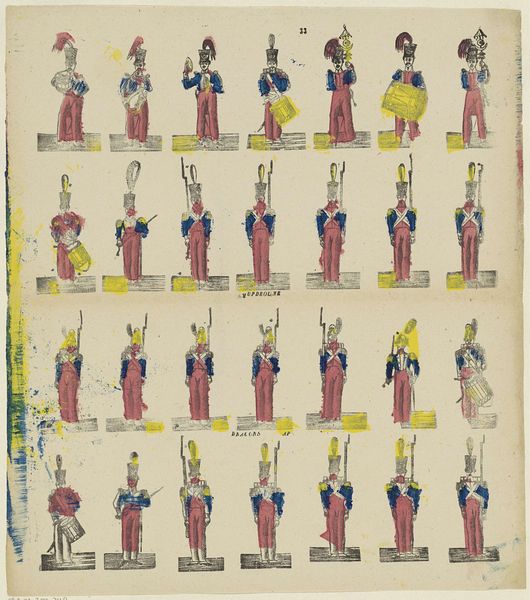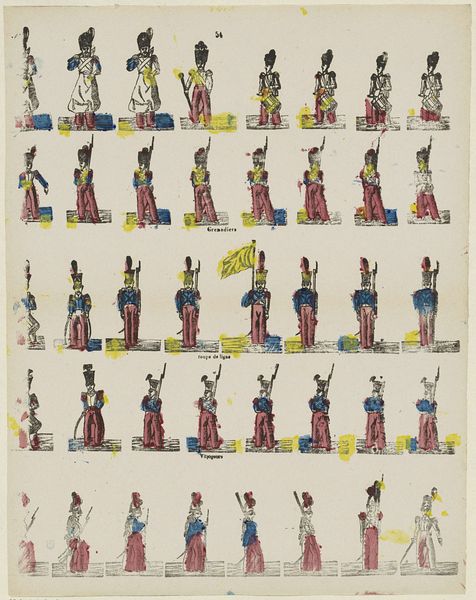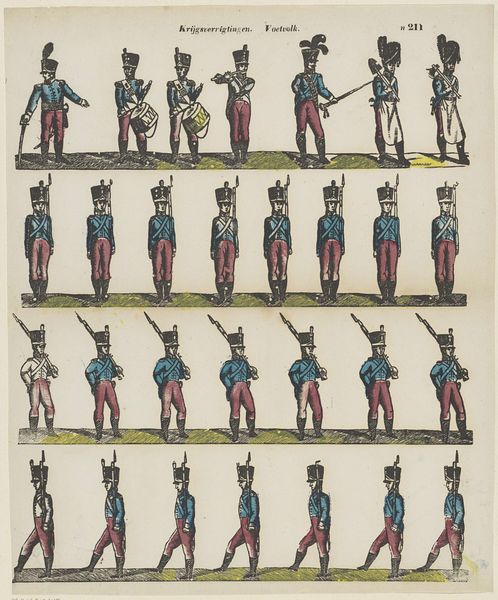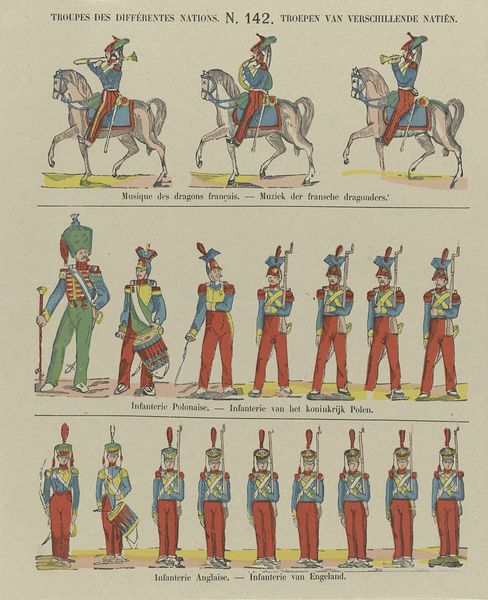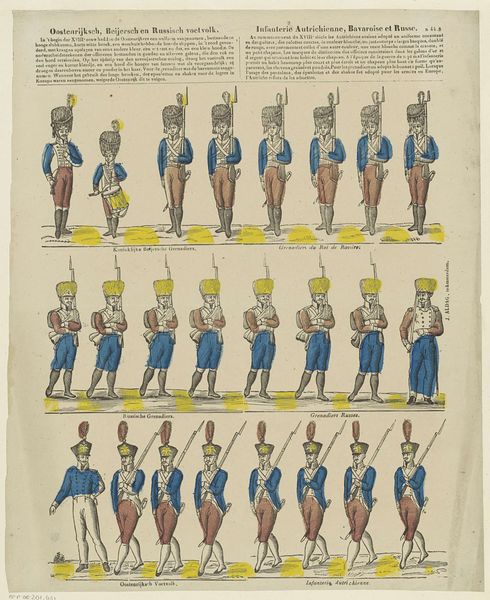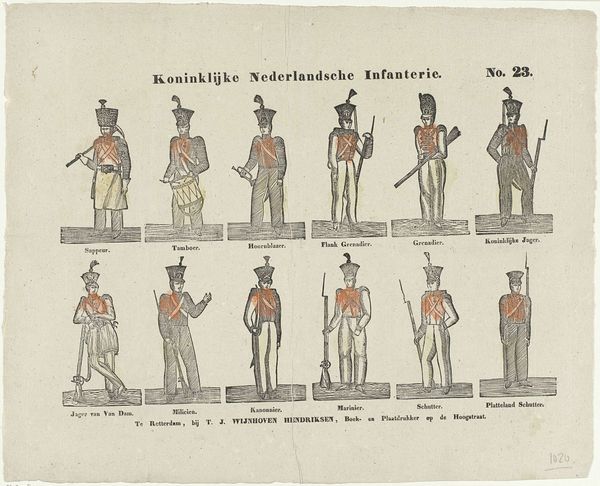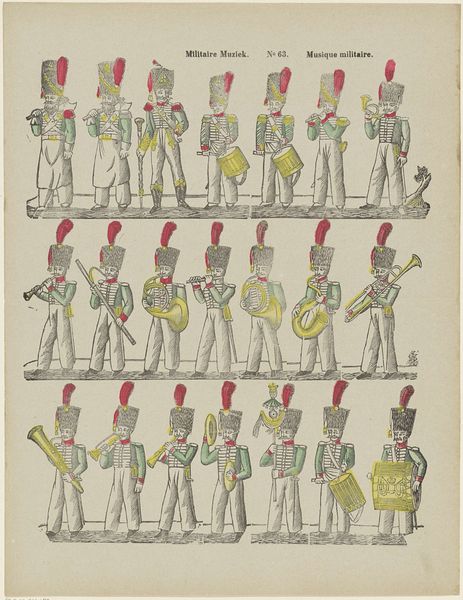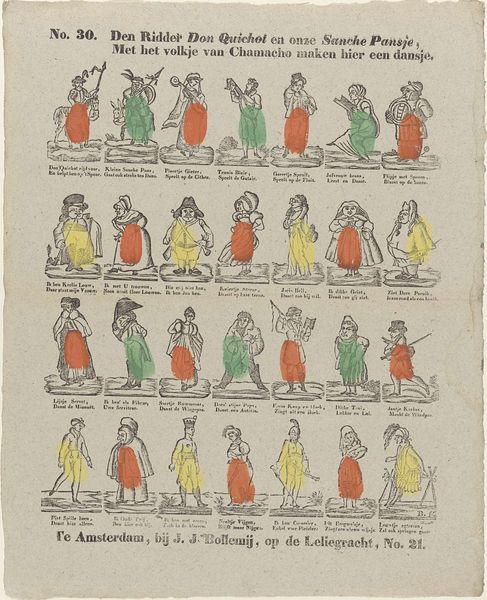
drawing, print
#
drawing
# print
#
figuration
#
genre-painting
#
history-painting
#
realism
Dimensions: height 302 mm, width 397 mm
Copyright: Rijks Museum: Open Domain
Curator: This work is entitled "Militairen" which simply translates to "Military Men". It's a drawing, or perhaps more accurately a print, by M. Hemeleers-van Houter, dating from sometime between 1827 and 1894. What's your initial impression? Editor: Well, visually, they're almost like paper dolls waiting to be cut out. The colors are surprisingly vivid considering the age. What stands out is the standardization of uniform, bodies presented in the same manner—all hinting at enforced military practices. Curator: Precisely. Consider the context. This dates from a period of significant militarization across Europe. These soldiers are rendered almost like interchangeable parts, fitting neatly into the expanding military machine. The production process itself mimics the industrial logic of the time, favoring reproduction and standardization. Editor: Right, and looking through the lens of critical theory, it's fascinating how the print, through its very medium, participates in a form of propaganda. Not explicitly, of course, but through the normalizing depiction of military power. It feels so distant to us but each soldier bears the historical burdens and inequalities tied to nineteenth-century military expansion. Who benefits, who is excluded, whose identities are erased in the service of nationalism? Curator: And let’s look at the materiality. As a print, it speaks to a kind of artistic labor readily disseminated. It wasn't crafted for an elite collector but designed for broader consumption—perhaps even as visual source material or as model figures to copy? What sort of impact would that mass replication and accessibility have had at the time? Editor: Thinking about that accessibility, who are they serving? This image invites viewers, especially those from historically marginalized or underrepresented communities, to question the values, allegiances, and forms of historical accountability implied within such historical visual materials. What impact has it made on perceptions of race, class, gender within military structures? Curator: Indeed. It underscores how seemingly simple artifacts like this drawing become part of the ideological machinery of power. Editor: Definitely. It makes you rethink how seemingly banal imagery helps form our cultural narratives about power, and war. So much history contained within a relatively simple-looking print.
Comments
No comments
Be the first to comment and join the conversation on the ultimate creative platform.
